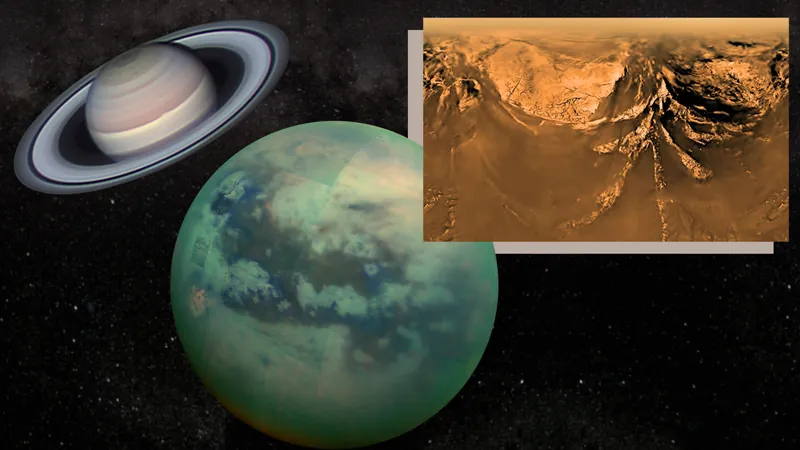
Could Saturn's Moon Titan Be a Hotbed for Life's Building Blocks?
2025-07-15
Author: Chun
Life's Precursors Found in Titan's Lakes?
NASA scientists are shaking up our understanding of life beyond Earth, revealing that cell-like structures called vesicles could potentially form in the frigid lakes of Titan, Saturn's largest moon. Unlike our water-based world, Titan is awash in liquid hydrocarbons such as ethane and methane. While water is essential for life as we know it, researchers suggest that the unique chemistry of Titan’s lakes might also foster the formation of life—either as we recognize or in forms completely alien to us.
Unlocking the Mystery of Vesicles
This groundbreaking research uncovers how vesicles might arise on Titan, offering insights into the early stages of life. Conor Nixon, a NASA astrobiologist, stated, "The presence of vesicles on Titan would indicate a rise in complexity and order, crucial for the origins of life." Nixon's excitement is shared by many, as these findings could provide fresh avenues for Titan exploration and redefine our hunt for extraterrestrial life.
The Science Behind “Pockets of Life”
So, how do vesicles form? It all starts with amphiphiles—special molecules that have both water-attracting (hydrophilic) and water-repelling (hydrophobic) properties. When these amphiphiles interact with their environment, they can self-assemble into vesicle-like structures, akin to soap bubbles, though the process on Titan would look quite different.
Titan's Harsh Environment
Titan stands apart not just as the solar system's largest moon but also its most atmospheric. Its dense atmosphere results from its cold temperature and remoteness from the sun, which keeps solar winds from stripping away its gases. With nitrogen clouds raining methane—a process that erodes the surface and forms river channels leading to lakes—Titan is a chemical playground.
The Role of Methane
This gaseous dance allows for intricate chemical reactions, particularly when sunlight splits methane into smaller fragments that can then bond into complex organic molecules. Researchers theorize that vesicles could form when raindrops of methane interact with amphiphile-coated surfaces of Titan's lakes, resulting in bilayer vesicles that trap the original droplets.
Looking Ahead: The Dragonfly Mission
The implications of this research are monumental, especially with NASA's upcoming Dragonfly mission set to launch in 2028. This nuclear-powered rotocopter is destined to explore Titan's vibrant chemistry and assess its potential habitability upon arrival in 2034. If vesicles are indeed forming, it could redefine our understanding of life's emergence on Earth and beyond.
Why It Matters
As we delve deeper into the possibilities of life on other worlds, the findings on Titan remind us that life’s building blocks may exist in unexpected environments. Titan’s lakes might just hold the secrets to understanding our own origins.



 Brasil (PT)
Brasil (PT)
 Canada (EN)
Canada (EN)
 Chile (ES)
Chile (ES)
 Česko (CS)
Česko (CS)
 대한민국 (KO)
대한민국 (KO)
 España (ES)
España (ES)
 France (FR)
France (FR)
 Hong Kong (EN)
Hong Kong (EN)
 Italia (IT)
Italia (IT)
 日本 (JA)
日本 (JA)
 Magyarország (HU)
Magyarország (HU)
 Norge (NO)
Norge (NO)
 Polska (PL)
Polska (PL)
 Schweiz (DE)
Schweiz (DE)
 Singapore (EN)
Singapore (EN)
 Sverige (SV)
Sverige (SV)
 Suomi (FI)
Suomi (FI)
 Türkiye (TR)
Türkiye (TR)
 الإمارات العربية المتحدة (AR)
الإمارات العربية المتحدة (AR)